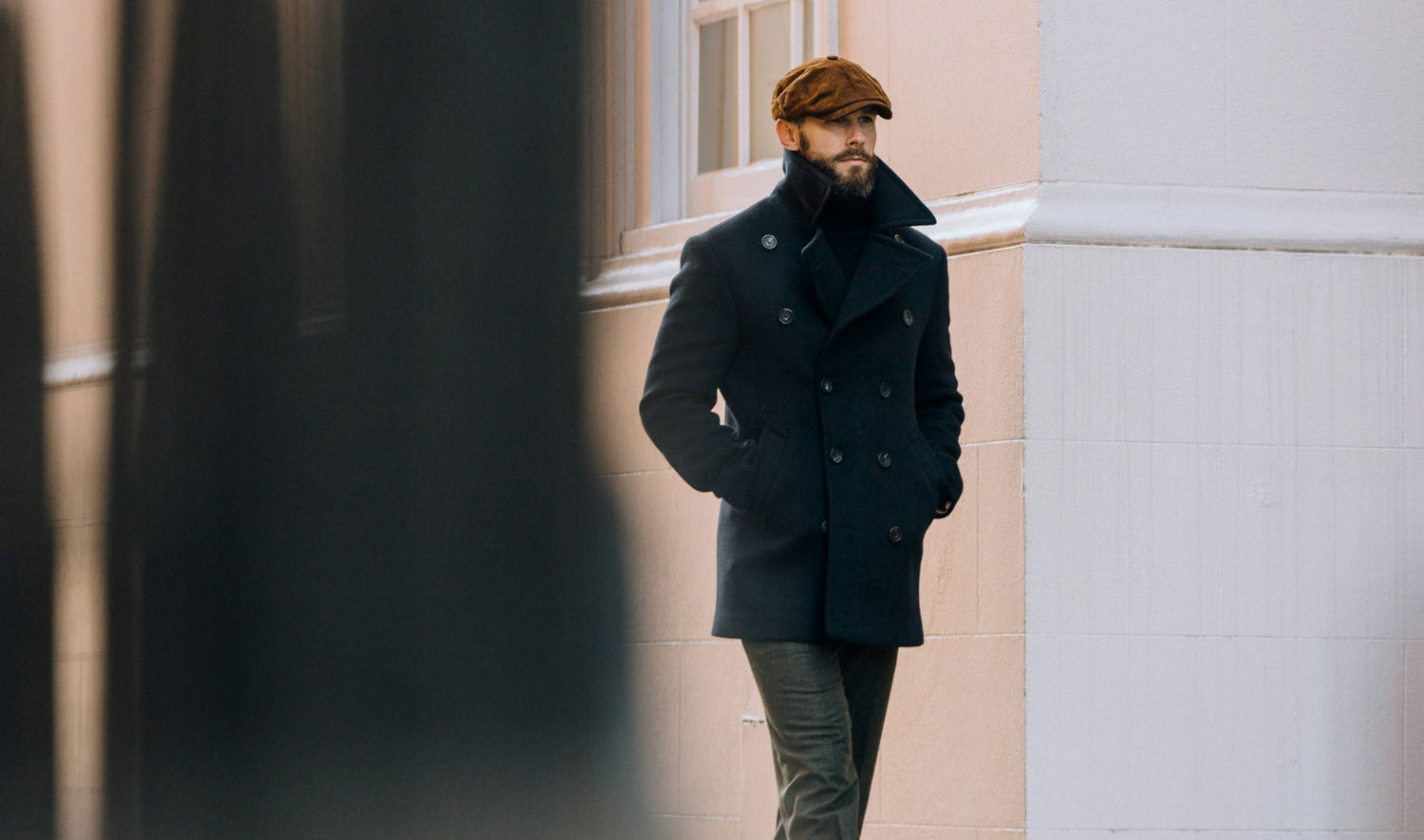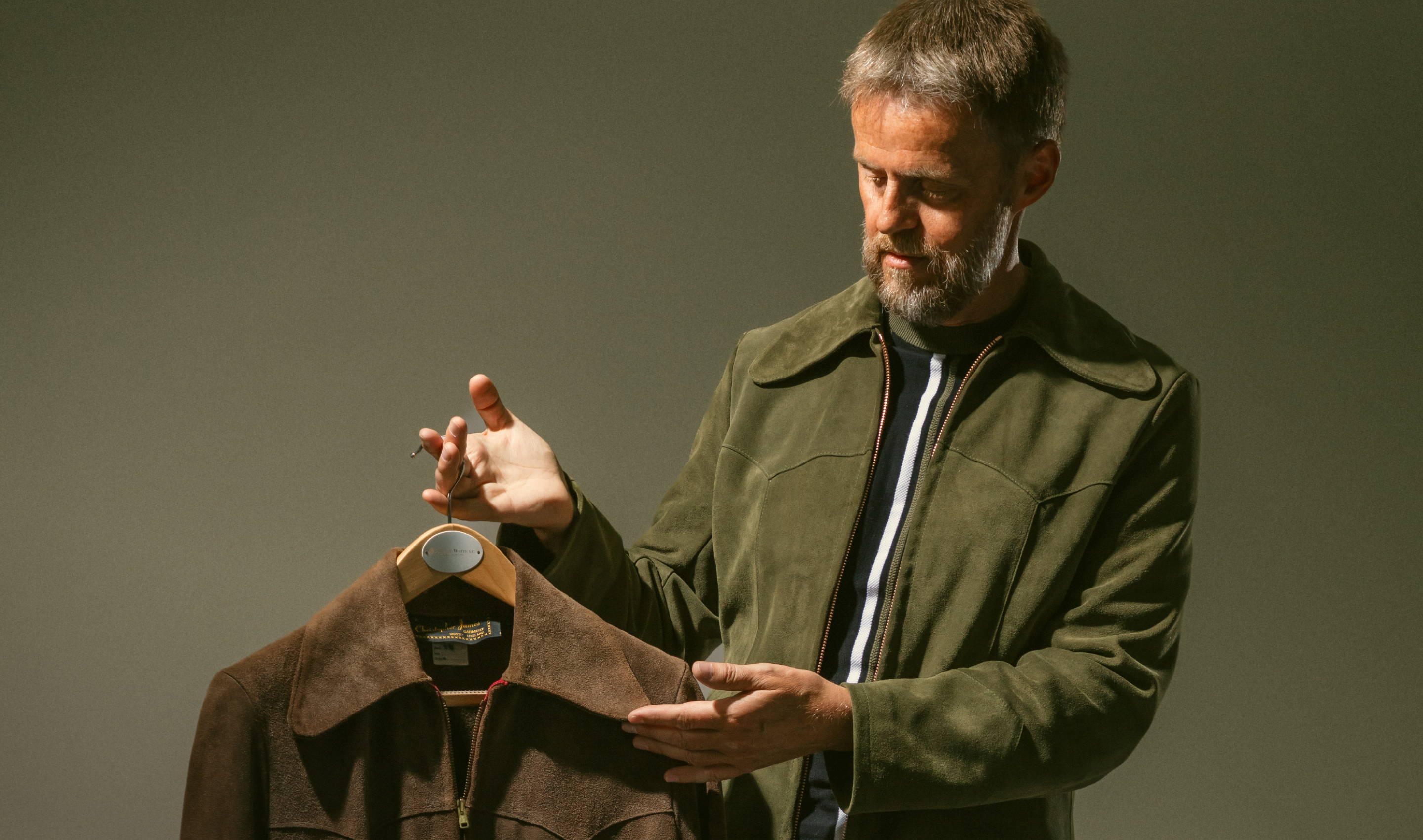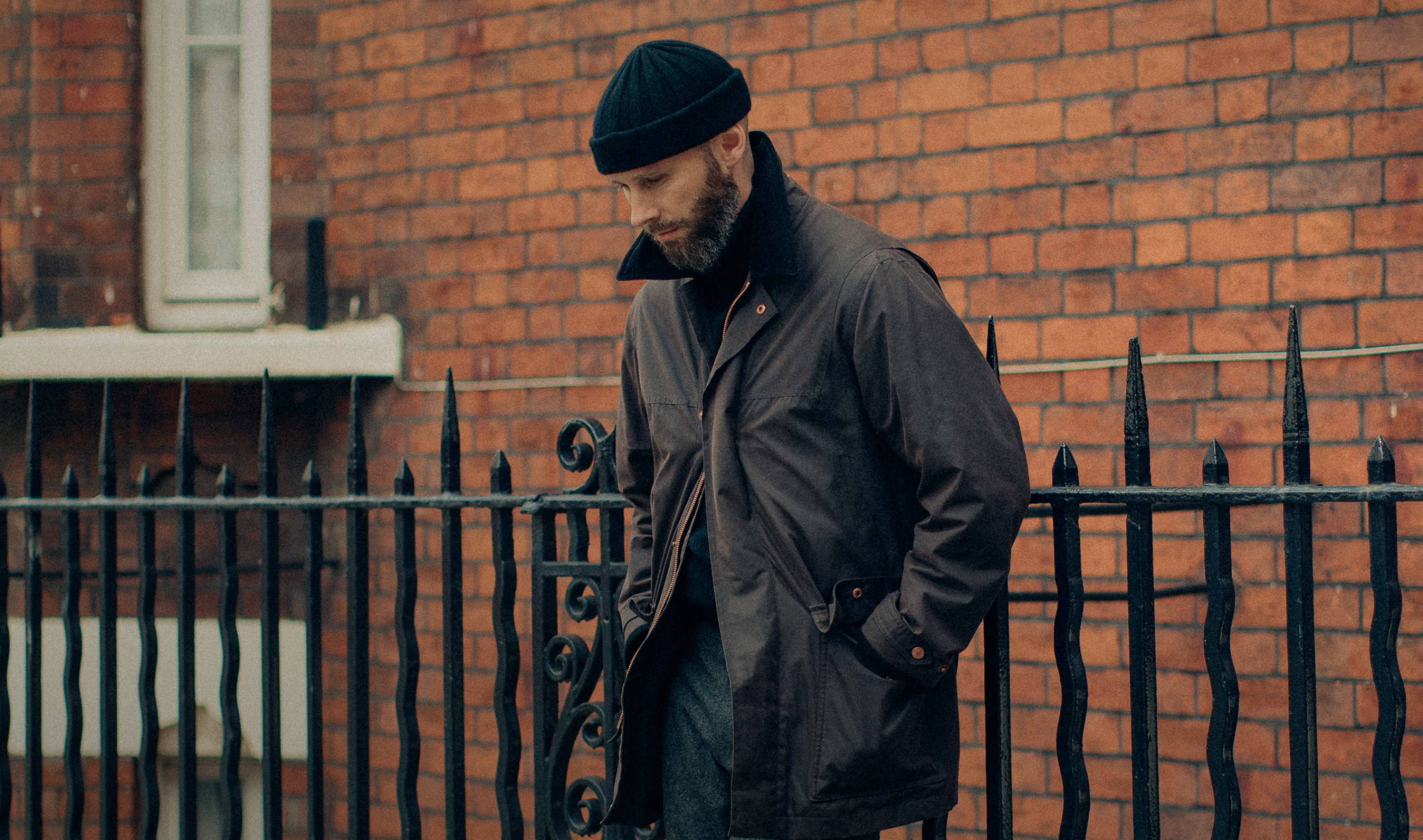Words by Simon Crompton
Imagery by Jamie Ferguson
Given how diverse and fluid modern wardrobes are, pea coats are an incredibly useful piece of menswear. Few other things are versatile enough to go with smart jackets and trousers, but also with jeans and knitwear. But they’re rarely designed with tailoring in mind. Pea coats are usually too short to cover a traditional suit jacket, and are often too small in the shoulder and sleeve. So we made a version that corrects these points - suited to the Permanent Style reader. That they can wear with their oatmeal blazers as well as their shetland sweaters.
But as well as adding 2.5 inches to the length, we put in some traditional design details. For as great as a lot of modern pea coats are, their designs are quite basic. Most importantly, we changed those two lines of buttons up the front. These are usually straight and square, which is pretty dull.
Words by Simon Crompton
Imagery by Jamie Ferguson
Given how diverse and fluid modern wardrobes are, pea coats are an incredibly useful piece of menswear. Few other things are versatile enough to go with smart jackets and trousers, but also with jeans and knitwear. But they’re rarely designed with tailoring in mind. Pea coats are usually too short to cover a traditional suit jacket, and are often too small in the shoulder and sleeve. So we made a version that corrects these points - suited to the Permanent Style reader. That they can wear with their oatmeal blazers as well as their shetland sweaters.
But as well as adding 2.5 inches to the length, we put in some traditional design details. For as great as a lot of modern pea coats are, their designs are quite basic. Most importantly, we changed those two lines of buttons up the front. These are usually straight and square, which is pretty dull.
They have been replaced them with a sweeping, flattering line more usually seen on overcoats - or on the naval officers’ equivalent of the pea coat, the bridge coat. Those two lines (as you can see below) narrow slightly from the hips into the waist, which is flattering in itself, but then bow dramatically outwards around the chest, creating an impression of strength - an impression accentuated by the line then narrowing again at the collar.
These two sweeping lines are only seen in full when the coat is buttoned all the way up (which of course it is able to do - like any good tailored coat). But even when only partly buttoned, this curving front edge adds character to the coat, creating lapels that curve outwards too - more like a double-breasted jacket than a normal pea coat.
Perhaps most importantly of all (for me), the materials are luxurious but understated. So distinctive as that sweeping front edge is, the effect is subtle because the buttons are dark and matte: unpolished dark-brown horn set on deep navy cloth. It hopefully achieves my usual aim with clothing: being stylish and elegant, but in so subtle a manner that no passer-by can point to its cause. He may suggest the collar, or the cloth, but he would be wrong. It’s all about the front edge and those buttons.
This is perhaps a minor point, but I also wanted to echo the Savile Row style I have always loved by using the same buttons they do. So the horn is not shiny, as the Italians use, or even really matte, again as the Italians sometimes offer. Rather, it is completely unpolished: often described as ‘dull’, though it is hardly dull to me. And they will be two-hole. Again, a small thing, but it’s a style of button rarely used in menswear outside Savile Row. Perhaps it seems a little more refined. Or perhaps I’ve just been looking at buttons too long.
Other details. The coat has two in-breast pockets, with the left-hand one placed between two buttons so that, when the coat is fully buttoned up, you can still access it by sliding your hand in between them (shown in two stages above). There is a nice big poacher’s pocket on the inside-left hip - so even if you have your hands plunged in both the outside pockets, there is sufficient room inside to carry everything. There are two jigger buttons on the inside of the coat. One at the waist, as standard, and one at the neck level.
The latter enables you to fasten one layer of the coat across your chest, keeping you warm, while keeping the other open. Style-wise this arrangement avoids looking too buttoned up, but it’s practical at the same time (below). In the back there is a central box pleat, to help a little with movement when wearing a jacket underneath. There’s then a half belt, merely for show, with a raised edge that echoes the pockets on the front. And below that, a central vent that can be fastened with two button tabs. The tabs are nicely hidden away inside a fold of the vent, rather than sticking out.
They have been replaced them with a sweeping, flattering line more usually seen on overcoats - or on the naval officers’ equivalent of the pea coat, the bridge coat. Those two lines (as you can see below) narrow slightly from the hips into the waist, which is flattering in itself, but then bow dramatically outwards around the chest, creating an impression of strength - an impression accentuated by the line then narrowing again at the collar.
These two sweeping lines are only seen in full when the coat is buttoned all the way up (which of course it is able to do - like any good tailored coat). But even when only partly buttoned, this curving front edge adds character to the coat, creating lapels that curve outwards too - more like a double-breasted jacket than a normal pea coat.
Perhaps most importantly of all (for me), the materials are luxurious but understated. So distinctive as that sweeping front edge is, the effect is subtle because the buttons are dark and matte: unpolished dark-brown horn set on deep navy cloth. It hopefully achieves my usual aim with clothing: being stylish and elegant, but in so subtle a manner that no passer-by can point to its cause. He may suggest the collar, or the cloth, but he would be wrong. It’s all about the front edge and those buttons.
This is perhaps a minor point, but I also wanted to echo the Savile Row style I have always loved by using the same buttons they do. So the horn is not shiny, as the Italians use, or even really matte, again as the Italians sometimes offer. Rather, it is completely unpolished: often described as ‘dull’, though it is hardly dull to me. And they will be two-hole. Again, a small thing, but it’s a style of button rarely used in menswear outside Savile Row. Perhaps it seems a little more refined. Or perhaps I’ve just been looking at buttons too long.
Other details. The coat has two in-breast pockets, with the left-hand one placed between two buttons so that, when the coat is fully buttoned up, you can still access it by sliding your hand in between them (shown in two stages above). There is a nice big poacher’s pocket on the inside-left hip - so even if you have your hands plunged in both the outside pockets, there is sufficient room inside to carry everything. There are two jigger buttons on the inside of the coat. One at the waist, as standard, and one at the neck level.
The latter enables you to fasten one layer of the coat across your chest, keeping you warm, while keeping the other open. Style-wise this arrangement avoids looking too buttoned up, but it’s practical at the same time (below). In the back there is a central box pleat, to help a little with movement when wearing a jacket underneath. There’s then a half belt, merely for show, with a raised edge that echoes the pockets on the front. And below that, a central vent that can be fastened with two button tabs. The tabs are nicely hidden away inside a fold of the vent, rather than sticking out.
And last but certainly not least, the Bridge Coat has a lovely brass-coloured lining, which I picked to look luxurious without being showy. A traditional bridge coat - by the way - would be rather longer than this, ending just above the knee. But it’s a helpful term to indicate our version’s longer length than a normal pea coat. And a bridge coat would have been worn by the officers on board rather than general seamen, so it fits with the higher-specced PS Bridge, with its cashmere-mix cloth and sartorial hardware. (I should also say that the Private White VC pea coat, from which the Bridge Coat evolved, is a great example of the more traditional model - with that shorter length and in great thick wool.)
THE PERMANENT STYLE
BRIDGE COAT
And last but certainly not least, the Bridge Coat has a lovely brass-coloured lining, which I picked to look luxurious without being showy. A traditional bridge coat - by the way - would be rather longer than this, ending just above the knee. But it’s a helpful term to indicate our version’s longer length than a normal pea coat. And a bridge coat would have been worn by the officers on board rather than general seamen, so it fits with the higher-specced PS Bridge, with its cashmere-mix cloth and sartorial hardware. (I should also say that the Private White VC pea coat, from which the Bridge Coat evolved, is a great example of the more traditional model - with that shorter length and in great thick wool.)
THE PERMANENT STYLE BRIDGE COAT






Leave a comment
This site is protected by hCaptcha and the hCaptcha Privacy Policy and Terms of Service apply.